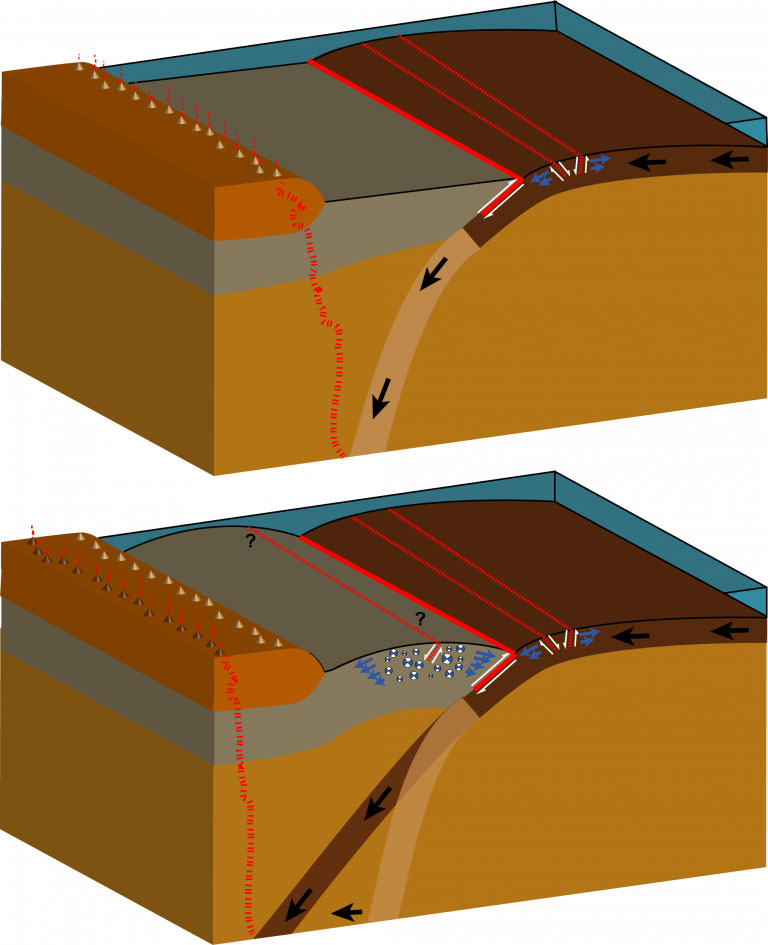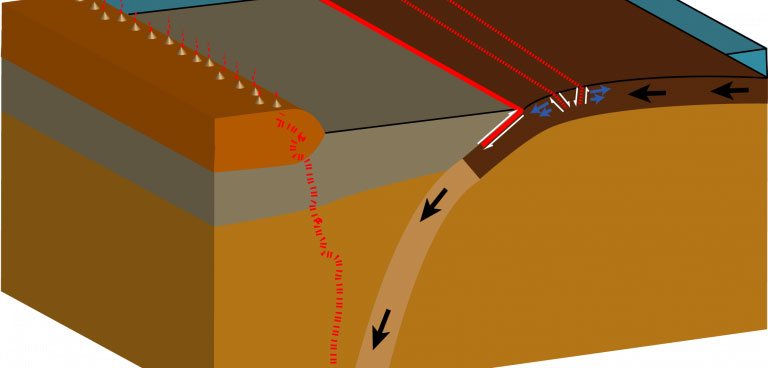Scientists have uncovered clues about the origin of an unusual geological structure off the coast of Japan, believed to have contributed to the devastating tsunami that struck the country in 2011.
The tsunami killed close to 20,000 people and caused a nuclear disaster in the country after a Magnitude 9 earthquake under the sea-bed triggered a wave that rose up to 40m-high in some places.
The tsunami’s most obvious cause was the quake’s location in a subduction zone where the Pacific Ocean tectonic plate was trying to slide under the continental plate on which Japan sits.
In the resulting seismic activity, known as a megathrust, hundreds of square miles of seafloor suddenly lurched horizontally by about 50m and upwards by 10m. But researchers investigating the quake soon uncovered an anomaly in the data. The tsunami produced waves three or four times bigger than usually expected for an earthquake of that magnitude.
As researchers probed this discrepancy, scientists in Japan discovered another unusual fault around 30 miles (48km) closer to shore than the fault that caused the tsunami. This fault, known as an extensional fault, is now believed to have magnified the tsunami.
An extensional fault is one in which Earth’s crust is pulled apart rather than being pushed together. Following the megathrust, the area around the extensional fault was pulled 60m seaward. The area was also warmer than the surrounding seabed, a sign of friction from recent movement.
Scientists believe that the extensional fault was jolted loose when the megathrust struck, significantly adding to the tsunami’s power. A new study in the journal Nature Geoscience looked at the processes that create extensional faults.
The study’s authors, based at Columbia University’s Lamont-Doherty Earth Observatory, examined a wide variety of pre- and post- quake data including seafloor topographic maps, sediments from underwater boreholes, and records of seismic shocks.
Through this analysis, they discovered that the angle at which the tectonic plate dipped under the continental shelf has been gradually shallowing out over millions of years. This shallowing pushed the sediments on top of the continental plate into a huge, subtle hump between the trench and Japan’s shoreline.
The research team believe that the hump eventually got so big and compressed, that when the megathrust happened, it broke apart.
Lamont geophysicist and study co-author Roger Buck said other regions susceptible to a similar phenomenon include areas off Nicaragua, Alaska and those in the earthquake zones of the so-called Pacific Ring of Fire.

Top: ocean crust (right) slides under continental crust at a steep angle, causing faulting (red lines) in seafloor sediments piled up behind.
Bottom: as the angle shallows, stress is transferred to sediments piled onto the continental crust, and faults develop there. Blue dots indicate resulting earthquakes. At left in both images, the change in angle also shifts the region where magma fuelling volcanoes is generated, pushing eruptions further inland. (Adapted from Oryan and Buck, Nature Geoscience 2020)



